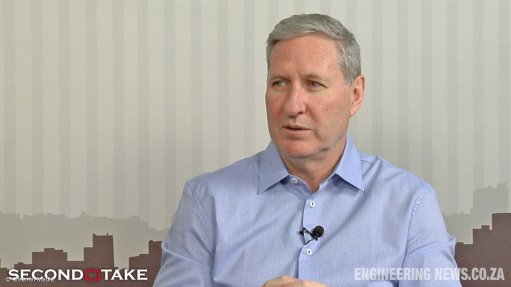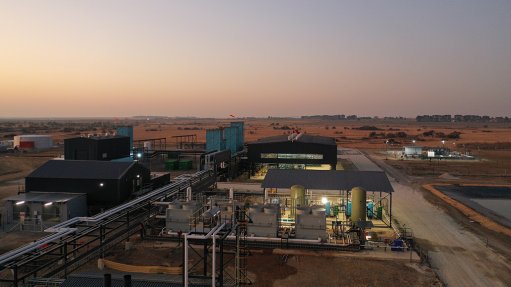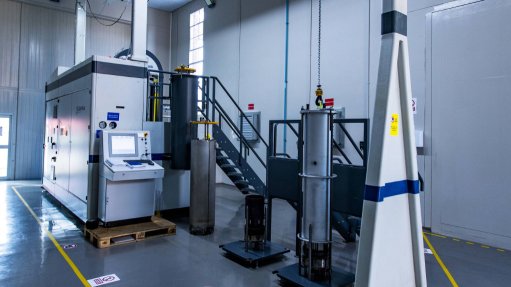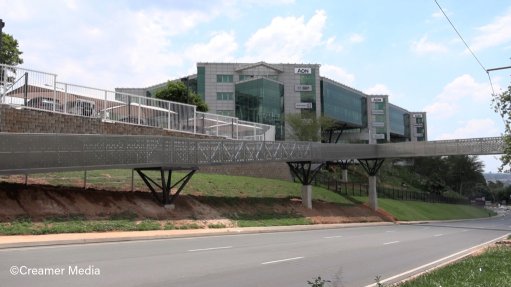AI Spurs Wave of Data Centre Growth in Africa
This article has been supplied.
The rapid rise of generative Artificial Intelligence (AI) services is driving increased demand for cloud computing — and by extension, data centres. As AI workloads expand globally, Africa is emerging as a critical frontier for new data centre development, with countries like South Africa, Kenya and Nigeria seeing growing investment from hyperscalers and tech giants.[1] This growth is also supported by industries such as banking, telecoms, retail and streaming services, which are becoming increasingly digital.
The surge in construction activity reflects this demand, but developers face familiar challenges: limited power infrastructure, land constraints, regulatory hurdles and sustainability commitments. These issues are especially pressing in regions with already stretched electricity grids.
According to Philip Cronje, Aon South Africa’s Business Unit Manager for General Specialty, early risk advisory involvement is vital from project planning through to operation. “Expert support can help developers manage complex construction, environmental and operational risks - while keeping costs and timelines in check.
“The push to meet rising energy needs is also spurring innovation across the continent - from advanced cooling systems and renewable energy integration to partnerships focused on power grid resilience. Yet, despite these strides, data centre projects remain high-stakes ventures where smart, forward-looking risk management is key,” Philip adds.
Top Risks in Data Centre Design and Delivery
- Power Availability
Reliable energy access is a critical factor in site selection. Developers in South Africa and other African markets often face long utility wait times, grid instability and rising costs - pushing them to explore alternative sources such as battery storage, gas generation and hybrid microgrids. Some projects even incorporate on-site generation to mitigate grid delays.
- Land Constraints
Hyperscale data centres require large tracts of land near major metros and power hubs. Finding a suitable site is increasingly competitive, and in urban areas such as Johannesburg and Nairobi, zoning restrictions and infrastructure limits can slow development. Early acquisition is essential to secure price and project phasing.
- Sustainable Construction
With growing pressure to cut carbon, developers are incorporating low-emission materials like carbon-trapping concrete and timber, while exploring centralised cooling solutions to reduce operational energy loads. These innovations are being watched closely by ESG-conscious investors entering the African market.
- Legislation and Public Pushback
High energy and water demand of data centres are drawing growing scrutiny from governments. In South Africa and across the continent, developers must navigate a complex legislative terrain, public consultation and rising sustainability expectations. Global frameworks such as the FAST-Infra Label and the EU Code of Conduct are beginning to shape local policy and investor expectations.
- Environmental & Operational Risks
Data centres face growing exposure to both internal hazards and external climate risks. Fires — often caused by equipment failure or human error — remain a leading threat, particularly in facilities with dense electrical systems and high-value hardware. In phased builds, fire risk is heightened by on-site flammable materials and ongoing construction. Developers are adopting stricter controls, including Li-ion battery separation and real-time monitoring systems, to reduce potential losses and downtime.
At the same time, climate change is adding new dimensions of risk. Extreme heat can overburden cooling systems, degrade equipment performance and even force shutdowns. In drought-prone regions, water scarcity directly threatens the ability to maintain cooling operations. Most data centres are still designed based on historical weather patterns — an increasingly outdated approach.
To stay resilient, developers are choosing elevated or climate-resilient sites, factoring in temperature extremes and weather volatility. Worker safety is also in focus, as rising temperatures can reduce productivity and trigger labour regulations that may disrupt construction timelines.
Six Smart Strategies for Managing Data Centre Risk
Effective risk management is essential to ensure that data centre projects stay on time, on budget and resilient to growing external pressures. Here are six key strategies to help developers navigate today’s complex risk environment:
1. Engage Early
Involve your insurance and risk advisor from the start of the project. Early input supports accurate risk identification, cost projections and alignment with current insurance market trends — as highlighted in Aon’s 2025 Global Construction Insurance and Surety Market Report.
2. Plan for Loss Before It Happens
Select experienced loss adjusting partners and run loss simulations throughout the project life cycle. Pre-loss planning improves response readiness and can significantly reduce downtime if an incident like a fire occurs.
3. Take a Life Cycle View
Work with a broker who can manage risk across the full project spectrum — from construction and operations to decommissioning. Fragmented approaches often lead to overlooked exposures and coverage gaps.
4. Clarify Stakeholder Risk
Risk advisors play a vital role in structuring contracts with architects, contractors, lenders and utility partners. Clear allocation of responsibilities is critical in complex, multi-party projects — particularly where power production is involved.
5. Consider Alternative Risk Solutions
In high-risk or climate-sensitive regions, alternative tools like captives and parametric insurance can supplement traditional cover and offer protection against weather-driven perils.
6. Incorporate Climate Risk Analysis
Using forward-looking climate data helps assess long-term exposure to natural catastrophe risks and supports resilient design and siting decisions — especially important as heatwaves, floods and droughts become more frequent.
“A knowledgeable broker with construction expertise is key to navigating a shifting market,” says Philip. “The best risk partners combine technical insight with global market access — an essential combination for complex, high-value data centre developments.”
Article Enquiry
Email Article
Save Article
Feedback
To advertise email advertising@creamermedia.co.za or click here
Comments
Press Office
Announcements
What's On
Subscribe to improve your user experience...
Option 1 (equivalent of R125 a month):
Receive a weekly copy of Creamer Media's Engineering News & Mining Weekly magazine
(print copy for those in South Africa and e-magazine for those outside of South Africa)
Receive daily email newsletters
Access to full search results
Access archive of magazine back copies
Access to Projects in Progress
Access to ONE Research Report of your choice in PDF format
Option 2 (equivalent of R375 a month):
All benefits from Option 1
PLUS
Access to Creamer Media's Research Channel Africa for ALL Research Reports, in PDF format, on various industrial and mining sectors
including Electricity; Water; Energy Transition; Hydrogen; Roads, Rail and Ports; Coal; Gold; Platinum; Battery Metals; etc.
Already a subscriber?
Forgotten your password?
Receive weekly copy of Creamer Media's Engineering News & Mining Weekly magazine (print copy for those in South Africa and e-magazine for those outside of South Africa)
➕
Recieve daily email newsletters
➕
Access to full search results
➕
Access archive of magazine back copies
➕
Access to Projects in Progress
➕
Access to ONE Research Report of your choice in PDF format
RESEARCH CHANNEL AFRICA
R4500 (equivalent of R375 a month)
SUBSCRIBEAll benefits from Option 1
➕
Access to Creamer Media's Research Channel Africa for ALL Research Reports on various industrial and mining sectors, in PDF format, including on:
Electricity
➕
Water
➕
Energy Transition
➕
Hydrogen
➕
Roads, Rail and Ports
➕
Coal
➕
Gold
➕
Platinum
➕
Battery Metals
➕
etc.
Receive all benefits from Option 1 or Option 2 delivered to numerous people at your company
➕
Multiple User names and Passwords for simultaneous log-ins
➕
Intranet integration access to all in your organisation



















